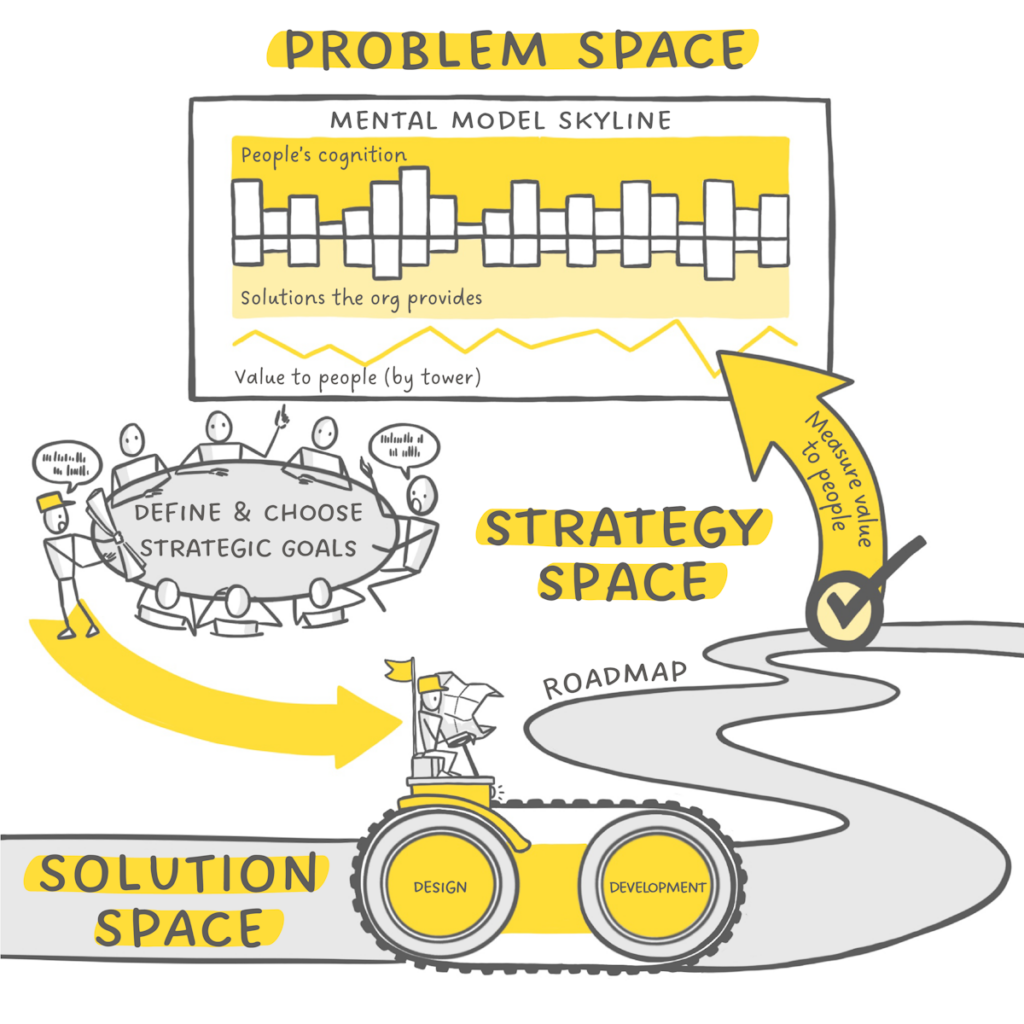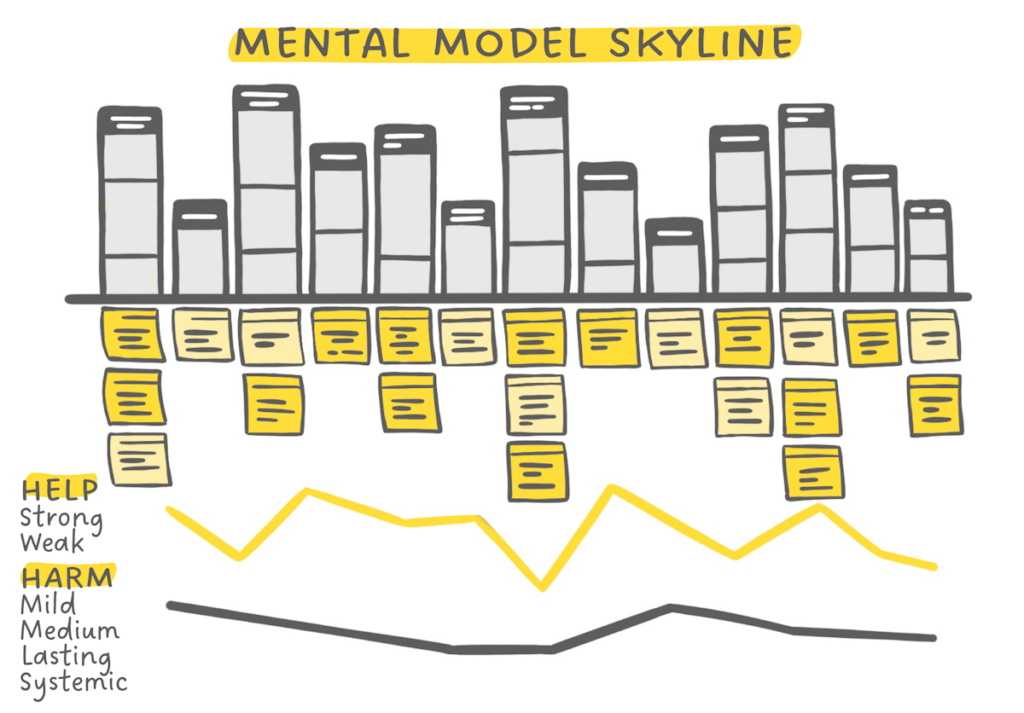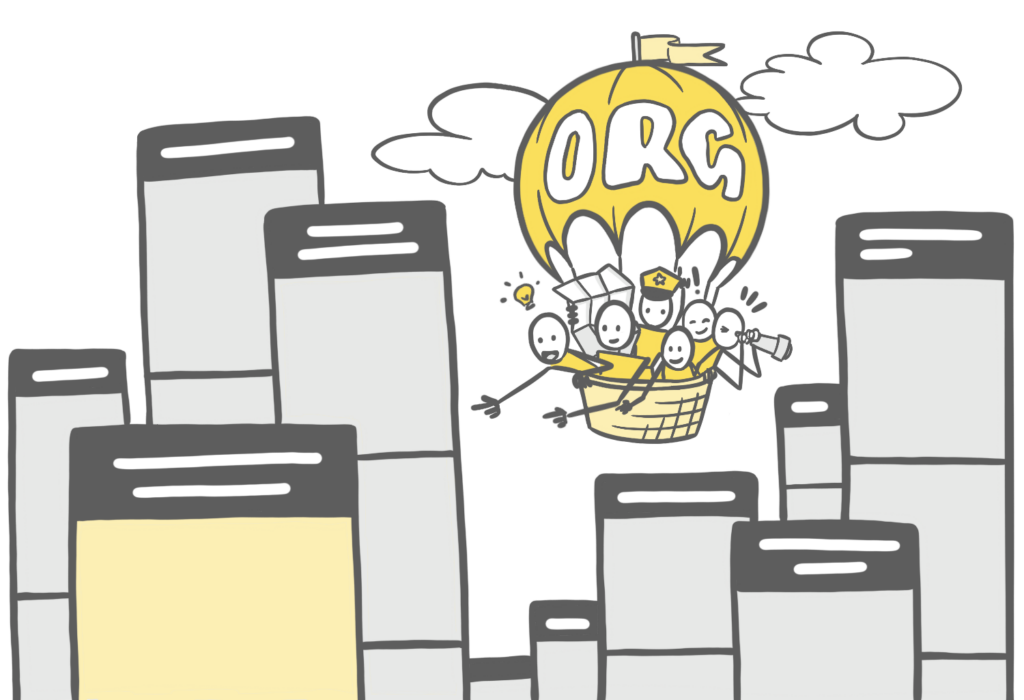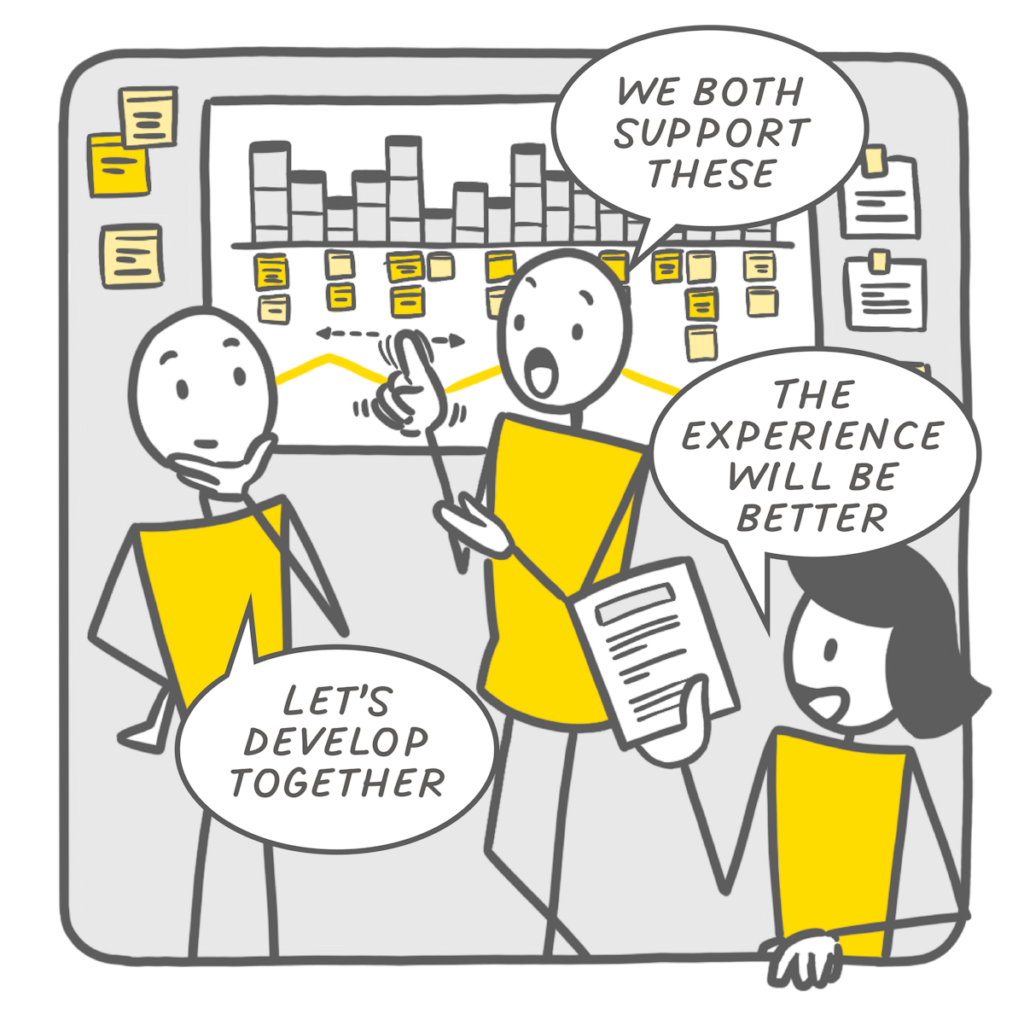Structure and clarity for your product decisions
The goals of your organization and your customers may not be aligned. If you offer an inadequate solution, people fail. Society fails. How people think, feel, and make decisions is your window into their goals.
Align your goals with people’s cognition, and everyone can succeed.
Here are a few of the ways the mental model skyline can benefit your business and improve outcomes:
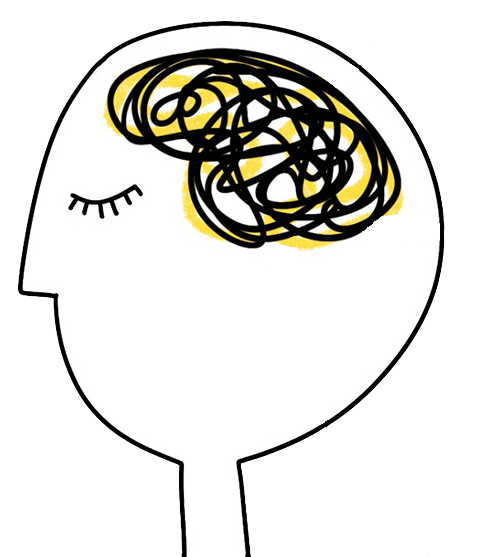
1. Stabilize your strategy
People’s cognition changes slowly. A mental model skyline fuels your experiments, innovation sessions, and audience-building for decades.
- The problem space represents people’s cognition about goals as a framework.
- This means your strategy space can include more thinking styles with less cognitive bias, providing stakeholders with empiric qual data science.
- And your solution space will blossom with deeper creativity, more variety, and solid tracking .
Build the knowledge once, add to the skyline as needed, and structure your work year after year.
2. Measure value to people
A mental model skyline accurately tracks the value you provide to people.
- Use familiar evaluative studies, but framed by skyline tower and recruited by thinking style.
- Watch spark lines lift over time as your solutions improve.
- See surprising opportunities to help people do things their way.
Strategy is about people.
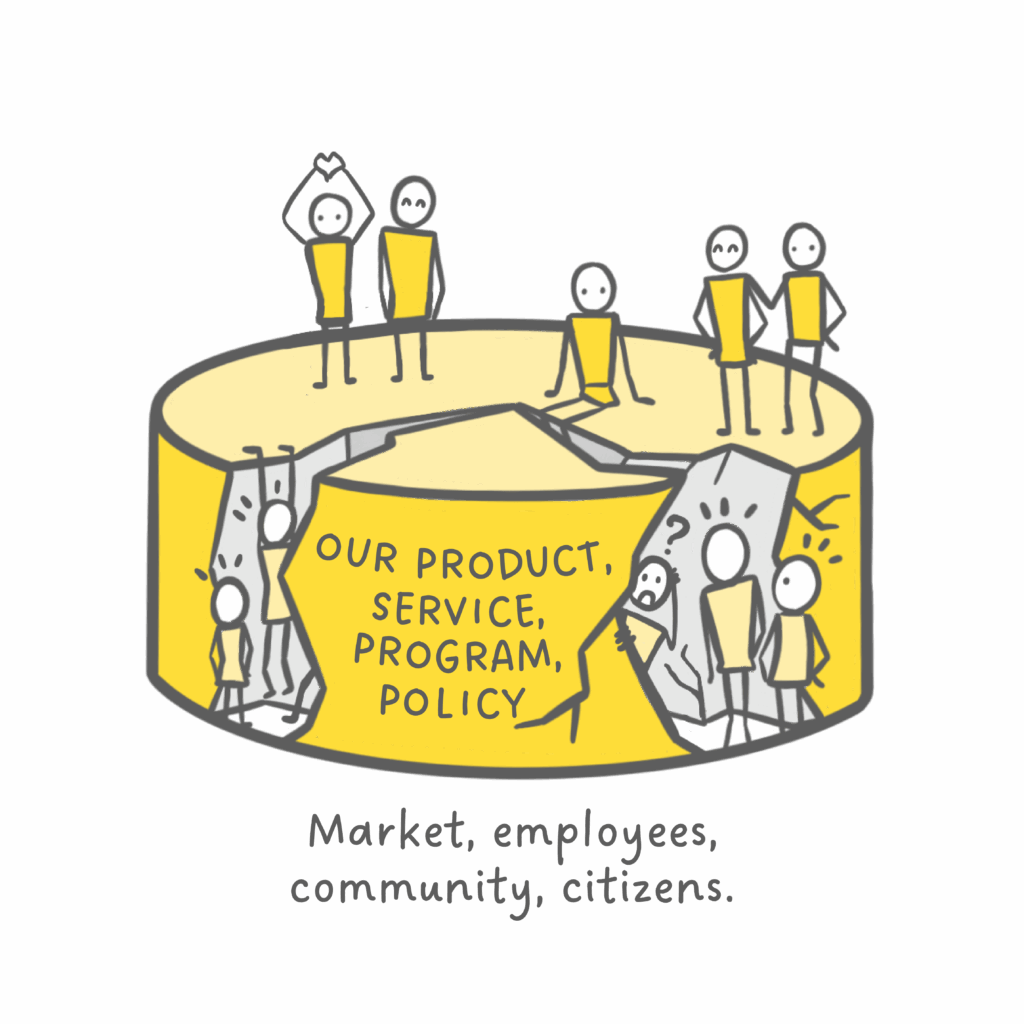
3. Recognize missing audiences

Strategy defined by demographic assumptions pushes most people into cracks. Build for the variety of hidden patterns of thinking styles.
- Roles describe process, not people.
- Stop using generalizing narratives.
- Cognitive empathy is scalable (where emotional empathy is 1-to-1).
The average user is a myth.
4. Innovate in the gaps
Innovation focused on people is rare because orgs find it easier to innovate by technology.
- Structure your innovation work in the skyline gaps
- Find a whole new path your competition hasn’t even looked for.
- Build technology that supports people’s cognition.
Do something very different. There is power in that.
5. Support more thinking styles
We can finally do it! We can support more people’s intents and approaches with designed solutions. And ask AI to recognize who is after what, cognitively, and guide them there.
Data Science That Listens provides the foundation for adaptive experiences that are deeply nuanced to the people you intend to serve.
AI won’t replace listening deeply and it won’t replace strategic thinking. But it will help us achieve guide people to solutions that match their thinking style.
6. Strengthen current methods
Elevate outcomes of the framework you already use with components of Data Science That Listens. It plays well with others.

Jobs To Be Done
(Tony Ulwick)

Empathy Mapping

Tie Quant to a Qual Structure

Behavioral Science Frameworks
(Robert Meza)

Design Thinking

Continuous Discovery
(Teresa Torres)
7. See work fitting together
Innovation is not the work of a single genius, but of a team.
Catalyze your collaboration with a common understanding of how things fit together from a customer point of view.
The mental model skyline holds layers and layers of your data, structured by cognition.

